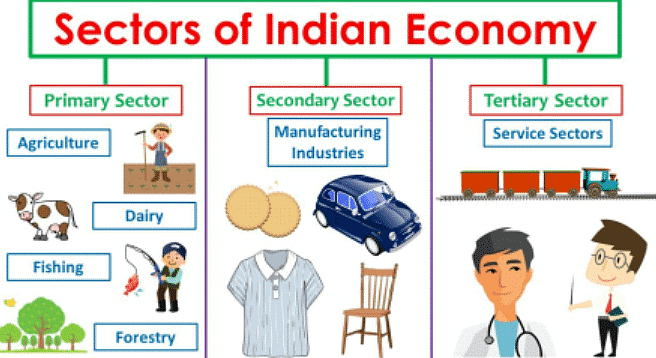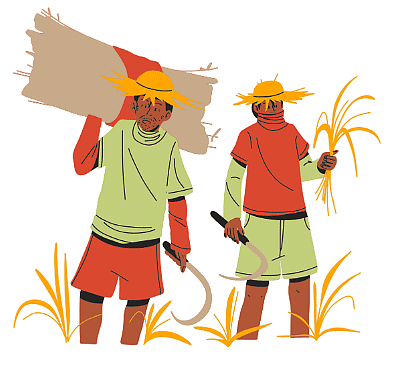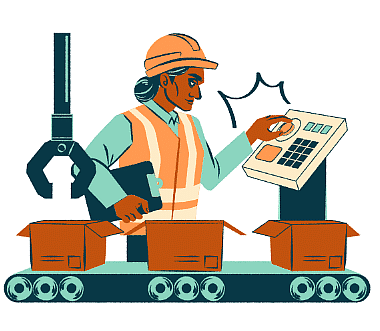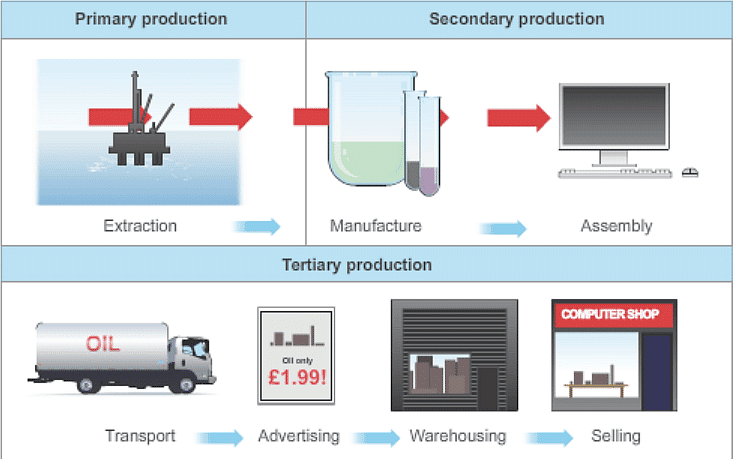Chapter 13 The Value of Work Notes & Summary
November 5, 2024Chapter 1 Locating Places on the Earth Very Short Question
November 5, 2024Introduction
Imagine waking up one day and everything around you is gone – no food, no clothes, no schools, and no means of transportation. Sounds chaotic, right? Our daily lives depend on a complex web of activities that keep everything running smoothly. These activities are what we call economic activities, and they are the backbone of our society. In this chapter, we’ll embark on an exciting journey to discover how these activities are classified into different sectors and how each sector plays a vital role in our lives. From farming fields to bustling markets, and from factories to service centers, let’s explore the fascinating world of economic activities!
The Classification of Economic Activities into Economic Sectors
Economic activities are grouped into three main sectors to help us understand and manage them better: primary, secondary, and tertiary. Each sector has unique characteristics and functions, but they all work together to keep our economy thriving.

Primary Activities
Definition: Primary activities involve directly using natural resources to produce goods. These are the most basic activities and form the foundation of our economy.
Examples:
- Agriculture: Growing crops like rice, wheat, vegetables, and fruits.
- Fishing: Catching fish and other seafood from oceans, rivers, and lakes.
- Mining: Extracting minerals such as coal, iron ore, and gold from the earth.
- Forestry: Harvesting timber and other forest products.
- Livestock Rearing: Raising animals for milk, meat, wool, and other products.

Explanation: Primary activities are crucial because they provide the raw materials needed for other sectors. For instance, without agriculture, we wouldn’t have food to eat or cotton for clothes.
Fun Fact: India is one of the largest producers of milk in the world, thanks to its vast number of dairy farms!
Secondary Activities
Definition: Secondary activities involve transforming the outputs of primary activities into finished goods. This sector includes manufacturing and construction.
Examples:
- Manufacturing: Producing cars, electronics, clothes, and furniture in factories.
- Construction: Building houses, roads, bridges, and other infrastructure.
- Utilities: Providing essential services like electricity, water, and gas.

Explanation: Secondary activities add value to raw materials by converting them into products that people can use. For example, cotton from farms is turned into fabric and then into clothes in factories. This sector is crucial for creating products that improve our quality of life.
Fun Fact: The world’s tallest statue, the Statue of Unity in Gujarat, is a product of secondary sector activities involving construction and metalworking.
Tertiary Activities
Definition: Tertiary activities provide services that support the primary and secondary sectors. This sector is often called the service sector.
Examples:
- Transportation: Moving goods and people from one place to another.
- Retail: Selling products in stores.
- Healthcare: Services provided by doctors, nurses, and hospitals.
- Education: Teaching in schools, colleges, and universities.
- Banking: Managing money, providing loans, and other financial services.
- Communication: Providing mobile, internet, and postal services.

Explanation: Tertiary activities include services that make our lives easier and support economic activities in other sectors. For example, without transportation, it would be difficult to get products from factories to stores. Without education, people wouldn’t have the skills needed for various jobs.
Fun Fact: The Indian Railways is one of the largest employers in the world, providing transportation services across the country!
Try yourself:
Which sector involves directly using natural resources to produce goods like wheat, vegetables, and fruits?
A.
Manufacturing
B.
Agriculture
Correct Answer
C.
Transportation
D.
Healthcare
Explanation
– Primary activities involve directly using natural resources to produce goods like wheat, vegetables, and fruits.
– Agriculture is a primary sector activity that focuses on growing crops and raising livestock.
– Manufacturing, transportation, and healthcare are part of the secondary and tertiary sectors, respectively.
Report a problem
Interdependence Among Sectors
The primary, secondary, and tertiary sectors are interconnected and support each other. Let’s explore this with an example from Anand district in Gujarat.
Dairy Cooperative: From Farm to Plate
Primary Sector: Farmers in Gujarat milk their cows and sell the milk to a dairy. This activity is a primary sector activity because the milk is directly obtained from livestock.
Secondary Sector: The milk is then processed in factories to make products like butter, cheese, and milk powder. This processing is a secondary sector activity.
Tertiary Sector: Finally, these products are transported and sold in markets. Transportation, retail, and marketing are tertiary sector activities.
Example of AMUL: AMUL, a famous dairy cooperative, started in Anand district. It transformed the lives of farmers by helping them sell their milk collectively, bypassing middlemen. This cooperative now produces a wide range of dairy products and sells them across India and even exports them to other countries.
Fun Fact: AMUL’s famous mascot, the Amul girl, has been the face of their advertising for over 50 years and is known for her witty and topical ads!

The Journey of a Computer
Let’s look at the process of making computer to understand the interdependence of these sectors.
- Primary Sector: Minerals like silicon are mined.
- Secondary Sector: Silicon is processed into computer components.
- Tertiary Sector: Components are assembled into computers, which are then distributed and sold.
Without the primary sector (harvesting trees), the secondary sector (paper manufacturing) wouldn’t have raw materials. Without the secondary sector, the tertiary sector (printing and distributing books) wouldn’t have products to work with.
Try yourself:
Which sector is responsible for mining minerals like silicon?
A.
Primary Sector
Correct Answer
B.
Secondary Sector
C.
Tertiary Sector
D.
Quaternary Sector
Explanation
– Primary sector involves activities like mining minerals directly from the earth.
– In the given example, mining of silicon falls under the primary sector as it is directly obtained from nature.
Report a problem
Conclusion
Understanding the classification of economic activities into primary, secondary, and tertiary sectors is like discovering the secret recipe of a delicious dish. Each sector adds its own unique flavor, and together, they create a balanced and thriving economy. The primary sector provides the raw ingredients, the secondary sector cooks and prepares them, and the tertiary sector serves and delivers them to us. This interdependence ensures that our economy functions smoothly, and every job, from farming to teaching, plays a vital role.

